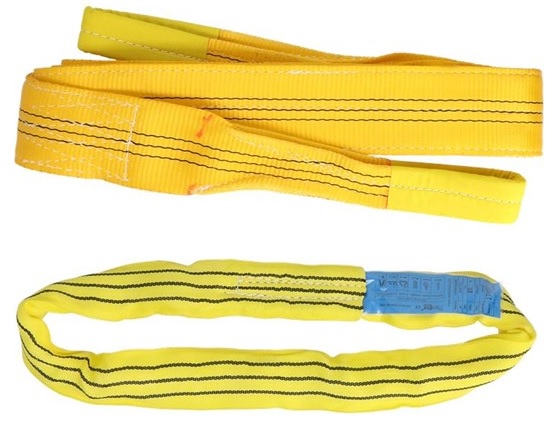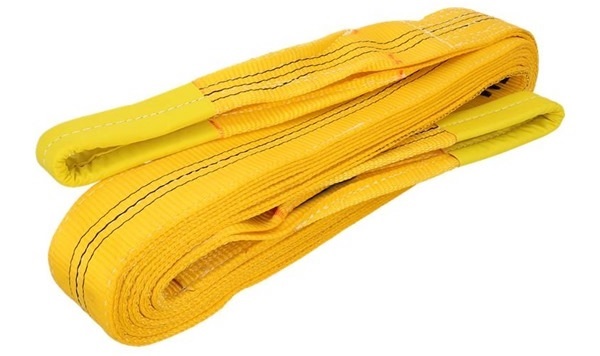
Both round slings and flat slings are used to secure, support and move heavy loads. They are a popular lifting solution as they distribute the load's weight evenly, providing stability, preventing damage and enabling the safe handling of objects that lack attachment points.
Read on to learn how a round sling is different from a flat sling and what advantages each sling type has to offer.
What Is a Round Sling?
A round sling is a type of synthetic lifting sling that's made from a continuous loop of high-strength polyester encased in a protective sleeve. This outer tubular sleeve helps to protect the load-bearing fibres from damage and abrasion.
Round slings are flexible, soft and lightweight, making them easy to handle and ideal for moving delicate or polished surfaces. They are usually colour coded, using industry-standard colour coding so that users can easily identify their working load limits.

Buy Round Slings
What Is a Flat Sling?
Flat slings (also known as webbing slings) are durable, lightweight lifting straps made from strong woven polyester and nylon webbing. They can come in different styles, including endless loop designs and eye-and-eye designs where you can attach the sling to lifting equipment like hooks and shackles.
Flat slings have a wide surface area that evenly distributes the lifting force, making them ideal for reducing pressure on the load and minimising damage. They are also usually colour coded for easy identification.

Buy Flat Slings
Round Slings vs Flat Slings: Key Differences
- Flexibility. Round slings have a more flexible construction and are able to easily adapt to load shape, whereas flat slings are less flexible.
- Load contact. Round slings have a smaller contact area, while flat slings have a wide surface contact.
- Durability. Round slings are encased in a protective sleeve which offers great internal fibre protection and abrasion resistance. Flat slings, on the other hand, are more exposed and thus more vulnerable to wear and tear.
- Ideal use. Round slings are best for round or irregular loads, and loads with delicate surfaces. Flat slings are best used for flat, stable loads (like pallets) and general lifting.
Both round slings and flat slings have different strengths. To maximise the safety and efficiency of your lifting operations, make sure you choose the correct sling for the job.
Use the link below to browse and buy lifting slings from Tensys Direct, or get in touch if you need further advice on what sling to purchase.
Buy Textile Slings